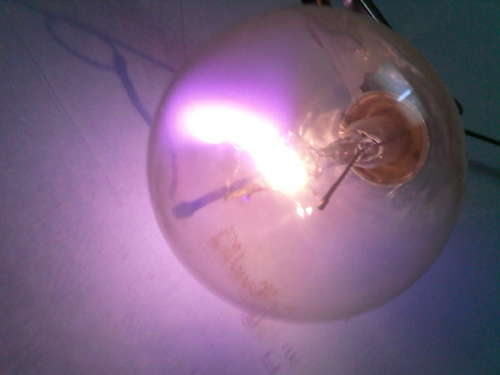
[Electorials] actually makes working with a flyback inverter sound rather easy. This comes hot on the heals of the huge high voltage collection we saw the other day, but slows way down in the presentation of information. This makes the project very approachable for the newbie, especially considering that the majority of the testing is done with low voltages.
He’s using a flyback transform for this project, which can be pulled from an old CRT monitor. Once you have one in hand, all that’s required to figure out how to use it is a voltometer, a 9V battery, a MOSFET (also salvaged in this case), and miscellaneous components. Once he establishes what each external connection does electronically, [Electorials] builds his circuit on a breadboard, then uses it to create plasma in the bulb above as well as to light up a CCFL.















“hot on the heals” ?
@Sanjay maybe HV burns heal fast?
Maybe HV is so hot it cauterizes the wound, making it heal more quickly?
Mike, are you doing it on purpose just to annoy us?
LOL “heals”. I have the same problem sometime, the damn spell check doesn’t know what word I meant to type. In that I have never seen a HAD spelling mistake obscure important in formation. Maybe the mistakes are intentional, to get a rise some readers. As far as the instructable goes making a continuity tester that use a higher voltage than 1.5 V to sort out the high turns count secondary is a good tip.
I kinda like this, in that he attempts to make it safe, doesnt try to write the whole book and focuses on doing it in a way that is less likely to generate makerbbq.
PS you guys sure your engineers and not english teachers?
You mite want to cheque you’re own grammar before critizing others. It’s you’re, not your.
Accidents (Stupid, unexpected stuff) happen. One I had blew the end off the screwdriver I was using. I got a good whack even knowing I was holding the insulated end. Since then I have been bloody careful around anything over 50 volts.
Anyway isnt an English Teacher just another name for a spell checker?
It looks like a boobie!
@ Jonathan
Ha ha, you said boobie.
@ matt
i think its this to be correct if not blame Google
You might want to cheque your own grammar before criticizing others. It’s you’re, not your.
my own grammar sucks if not spelling to. I have the Dyslexia but am good with electronics and the sorts. So i tend to care less about the grammar and spelling and focuses more on the subject at hand. I get the information that there trying to get across to us.
To remove a flyback from a CRT safely you shouldn’t use a screwdriver alone. You need to use a wire with a 1Mohm resistor in series with the wire going to the CRT ground and hold it to the connection. . CRT discharge can kill or cause serious injury so I recommend using a glove on the hand holding the screwdriver. The injuries I have seen are usually not from the shock itself but the reflex action. You get shocked, jerk your hand back and your hand or arm hits something else causing the injury. When we did repairs we used a probe to discharge the CRT. It was about 2 ft long designed for that purpose but internally was just a resistor and insulators. Still it is best to follow the rule of ‘keep one hand in your pocket’ when working with HV.
Now the fun stuff:
flybacks work over a 5-25VDC range, most though need to stay below 12VDC or they overheat and can consume up to about 4 or 5A. The older ones are best, and the bigger the CRT it was used on the better. At full power a 27″ CRT flyback can generate a spark gap of about 2 inches. You can calculate the voltage by the gap size. About 1mm per 1,000 volts
“Voltometer” was my peeve.
Neat device, but why would anyone use a C/CFL? LED or incandescent is the only way to go. Everything else sucks.
CRTs and their flybacks (especially from very old or B/W TVs before they permanently sealed rectifier diodes into the flyback) are getting harder to come by, but small automotive ignition coils work great too. For my HV stuff I’m using a coil for a motorcycle/moped, about $10 new on ebay.
This is weird.